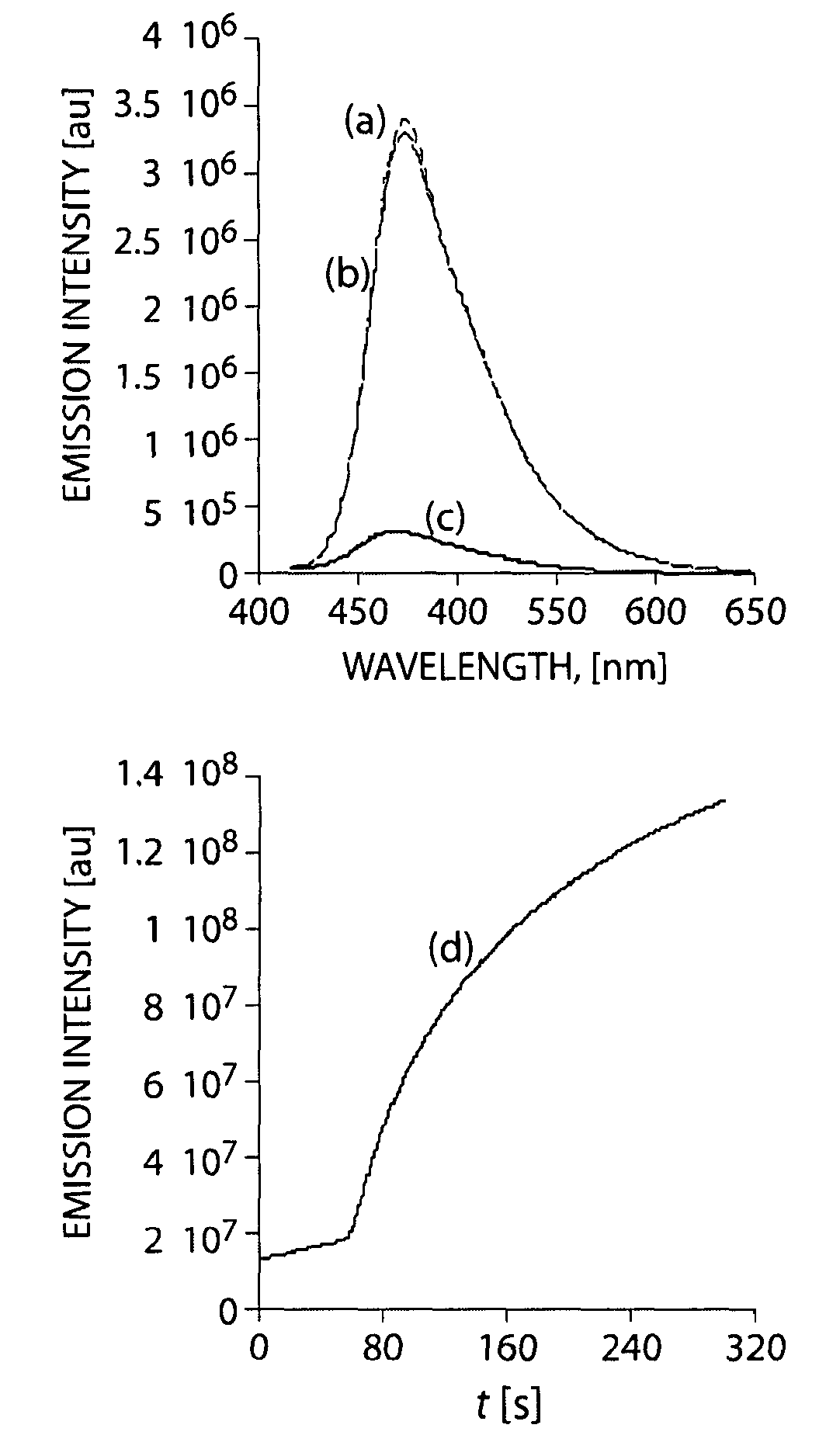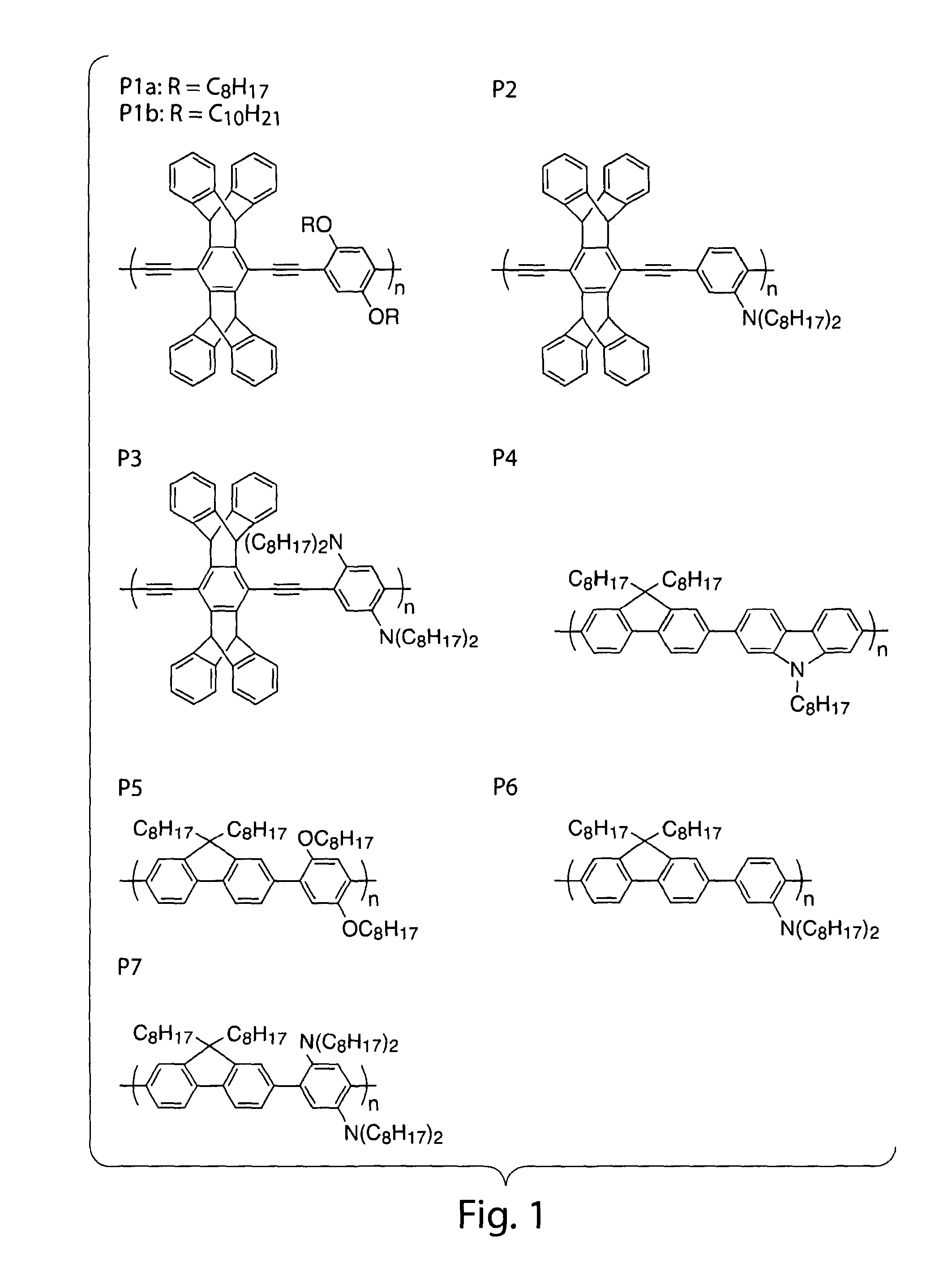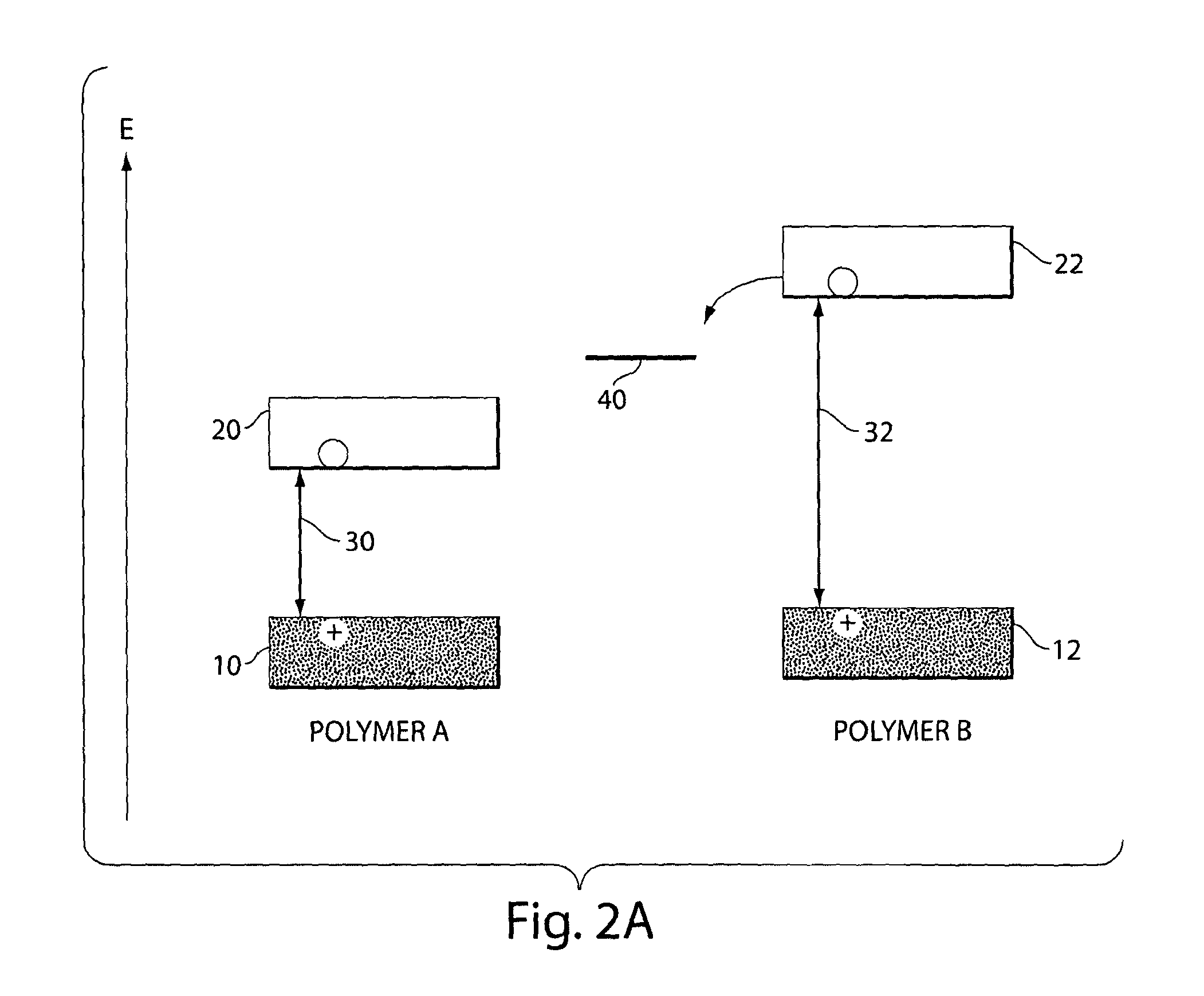Luminescent detection of hydrazine and hydrazine derivatives
a technology of hydrazine and hydrazine derivatives, which is applied in the direction of fluorescence/phosphorescence, instruments, material analysis, etc., to achieve the effects of increasing the luminescence intensity of a polymer, reducing the number of non-radiative pathways, and increasing the luminescence intensity
- Summary
- Abstract
- Description
- Claims
- Application Information
AI Technical Summary
Benefits of technology
Problems solved by technology
Method used
Image
Examples
example 1
[0088]In order to select optimally sensitive and operationally useful luminescent polymers for the detection of DMNB, polymers were designed to have electronic structures having greater photoreduction abilities. FIG. 2B illustrates qualitative energy level diagrams of the materials used in these experiments. Table 1 lists the Stern-Volmer constants [k(sv)] and quenching rate constants [k(q)] from Stem-Volmer experiments with these luminescent polymers with DMNB as the quencher. The variation in the quenching efficiency of the poly(phenylene ethynylene)s (PPEs, P1-3) revealed that the factors controlling the quenching rate constants are multifaceted. Although the pi-donation of the amines reduces the ground state oxidation potential for P3, it also lowers the band gap and thereby reduces the magnitude of P3's excited-state reduction potential. The higher quenching efficiency of P2, with only one amine per repeat unit, is likely due to a balance between these two effects. All of the P...
example 2
[0093]The ability of luminescent polymers to detect DMNB vapor was studied. Thin films of selected luminescent polymers were simultaneously irradiated and exposed to equilibrium vapor pressures of DMNB. In order to probe the effect of analyte molecular shape, benzophenone was also investigated as a vapor phase quencher. Benzophenone has a reduction potential (−1.6 V vs. SCE) similar to that of DMNB as well as a similar equilibrium vapor pressure (1.93×10−3 torr at 25° C.). In contrast to DMNB, the flat structure of benzophenone could allow for strong pi-stacking with the polymer film.
[0094]The experiments were carried out on a commercial Fido™ instrument manufactured by Nomadics Inc., which continuously monitors the total fluorescence during vapor sampling.
[0095]Upon exposure to DMNB vapor, solid-state fluorescence quenching by the PPEs was observed to be very weak relative to the PPs, with only P2 giving a 4-5% fluorescence attenuation in the presence of DMNB vapor.
[0096]FIG. 3 sho...
example 3
[0103]Both the solution and solid-state luminescence response of polymers P1b, P2, and P3 to hydrazine vapor was investigated.
[0104]UV / vis spectra were recorded on an Agilent 8453 diode-array spectrophotometer and corrected for background signal with a solvent-filled cuvette for solution measurements or a blank cover slip (for solid-state measurements). Emission spectra were acquired on a SPEX Fluorolog-τ3 fluorimeter (model FL-321, 450 W Xenon lamp) using front-face detection for all film samples. Hydrazine hydrate and iodine were purchased from Aldrich and used as received.
[0105]The preparation and characterization of polymers investigated in this study has been previously described in Yang, et al., J. Am. Chem. Soc. 1998, 120, 12389, Thomas III, et al., Macromolecules 2005, 38, 2716, incorporated herein by reference.
[0106]For solid-state spectroscopy, thin films were spun-cast onto glass cover slips from an approximately 1 mg / mL chloroform solution at 1500-3000 rpm. Experiments i...
PUM
| Property | Measurement | Unit |
|---|---|---|
| reduction potential | aaaaa | aaaaa |
| equilibrium vapor pressure | aaaaa | aaaaa |
| luminescent | aaaaa | aaaaa |
Abstract
Description
Claims
Application Information
 Login to View More
Login to View More - R&D
- Intellectual Property
- Life Sciences
- Materials
- Tech Scout
- Unparalleled Data Quality
- Higher Quality Content
- 60% Fewer Hallucinations
Browse by: Latest US Patents, China's latest patents, Technical Efficacy Thesaurus, Application Domain, Technology Topic, Popular Technical Reports.
© 2025 PatSnap. All rights reserved.Legal|Privacy policy|Modern Slavery Act Transparency Statement|Sitemap|About US| Contact US: help@patsnap.com



